Núcleo Português do
Museu da Pessoa
Maria Cacheira life story: an example
Projecto Afurada was one of the sub-projects carried out by Museum of the Person - Portuguese branch (MPpb) in the context of Porto 2001 the European Capital of Cultural event. The main MPpb project was aimed at reviving some ancient boroughs and traditional folk culture. In this project, Maria Alice Rodrigues Cacheira was one of the persons interviewed.
Figure 1 displays the bi that contains a mini-biography of Maria Cacheira, containing personal data, date and place of birth, job, among others.
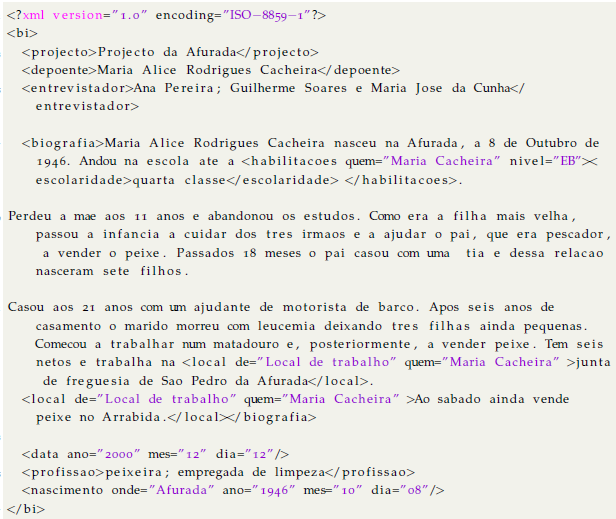
This bi was written according to the DTD shown in Figure 2. The root element is bi and can be composed of the name of the project and of the deponent, the interviewer, date, biography, address, job, birth, photo, etc. The photo is a photo that can be chosen to be shown along with the mini-biography.
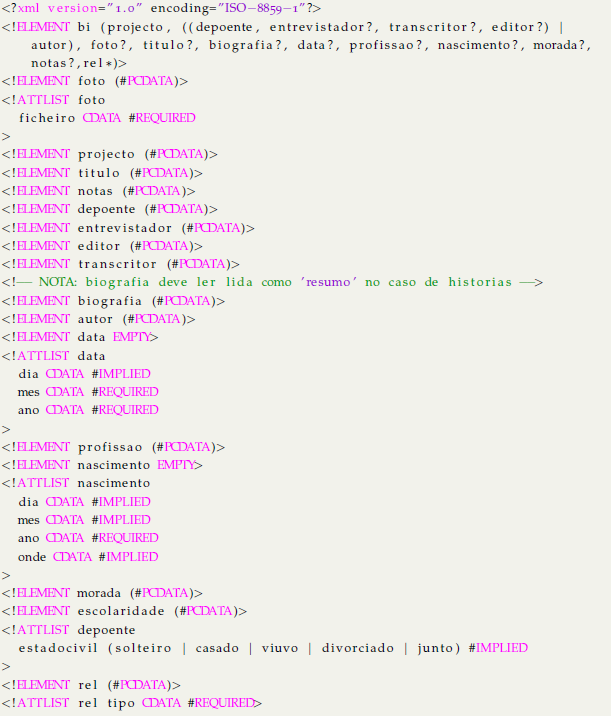
In Figure 3, the short identification of Maria Cacheira is composed of a brief self-introduction and the link to her photo with a dated caption.

Figure 4 is the photo of Maria Cacheira referred above in Junta de Freguesia da Afurada.
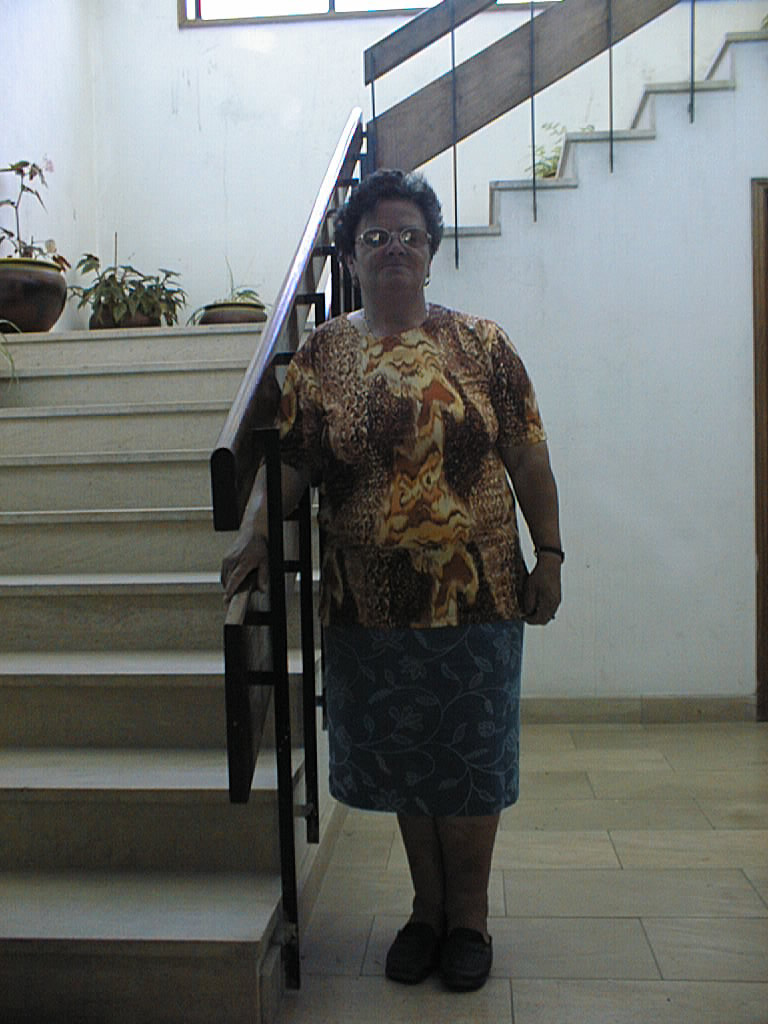
The caption of this photo (Figure 4) contains the name of the person in the photo (Maria Alice Rodrigues Cacheira), the place (Junta de Freguesia da Afurada) and the date on which it was taken the picture (2001-07-12), as can be seen in Figure 5.

The DTD used to describe a photo (as illustrated above) is displayed in Figure 6. The root element is photos that can contain more than just one photo and more than one author.
The photo element consists of the people contained in the photo, the location and date the photo was taken, the author, etc.
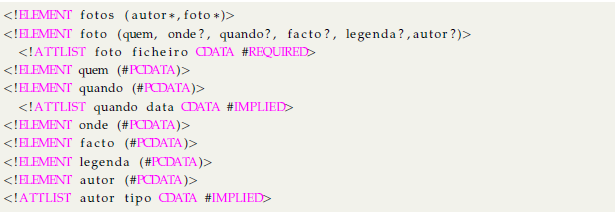
It is possible to read in Figure 7 an episode narrated by Maria Cacheira. This excerpt (markup in XML) was taken from the original interview.
The interview contains some key concepts that are part of the Thesaurus, for example <rel tipo="festa tradicional"> Natal </rel>. There are also metadata markup, in this case we have, for example, a date quando=”24 de Dezembro” and a term definition <expressao significado= "tecido grosseiro feito de materiais vegetais entrelacados"> esteiras </expressao>.
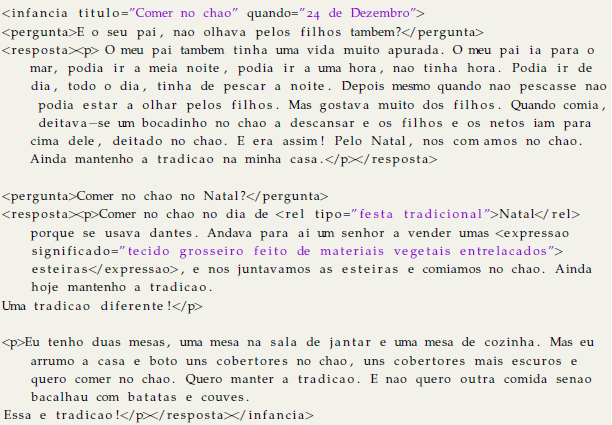
Figure 8 shows the same excerpt of Figure 9 but after being edited. Between the original and the edited interview there are a few differences, the most notorious is the fact that edited no longer contain the question-response structure.
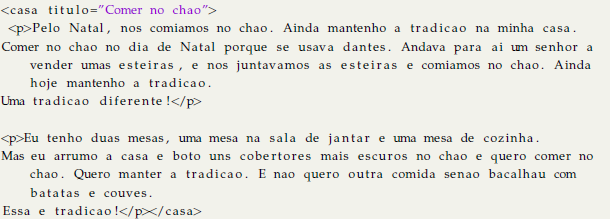
Figure 9 is a description of Maria Cacheira is marriage. Here she tells how old she was at marriage, the birth of children, the disease and death of her husband, among other episodes.
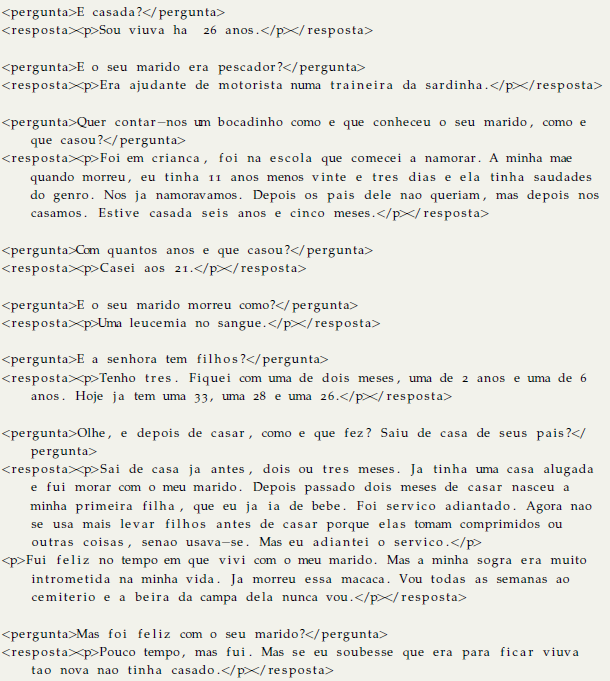
In the edited some version of the excerpt from the marriage of Maria Cacheira (Figure 10) can be seen several examples metadata markup, as the date of marriage <data tipo="casamento" ano="1967" mes="00" dia="00"> Casei aos 21 anos </data>, the birth of the first daughter <nascimento quem="primeira filha"> Depois passado dois meses de casada nasceu a minha primeira filha, que eu ja ia de bebe. </nascimento>, the date of death of the husband <data deque="morte marido" ano="1973" mes="00" dia="00"> seis anos e cinco meses</data> and husband’s job <profissao quem="marido" classe= "marinheiro"> ajudante de motorista numa traineira da sardinha</profissao>.
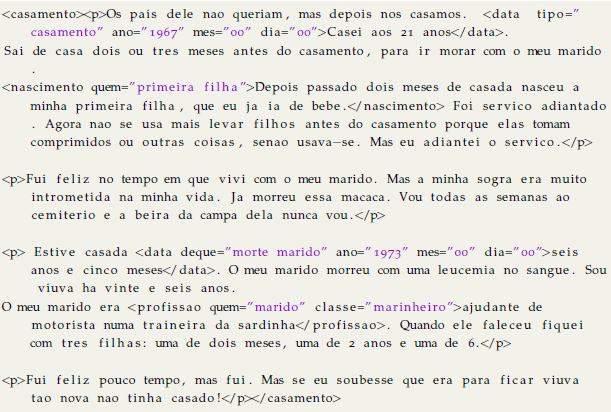
In the next excerpt (Figure 11), Maria Cacheira narrates an event: a flood in Douro River that invaded her house.

Once again, it should be noticed, the key concepts that are part of the Thesaurus, as for example: the street where she lived <ref tipo="local">Rua 27 de Fevereiro, Afurada </ref>, the neighborhood where she was staying after flood <ref tipo="bairro">Bairro do Cavaco</ref> and the references to the flood itself <episodio termo="cheias" titulo= "Sem casa" onde= "rio Douro>.
Maria Cacheira’s life story is an example of the set of XML documents that constitute MP’s assets. It also illustrates some steps in MP’s workflow. Their deep study was crucial to understand the museum objects in order to create the ontology museum objects the ontology and later on enable processing to build the virtual museum exhibition rooms.